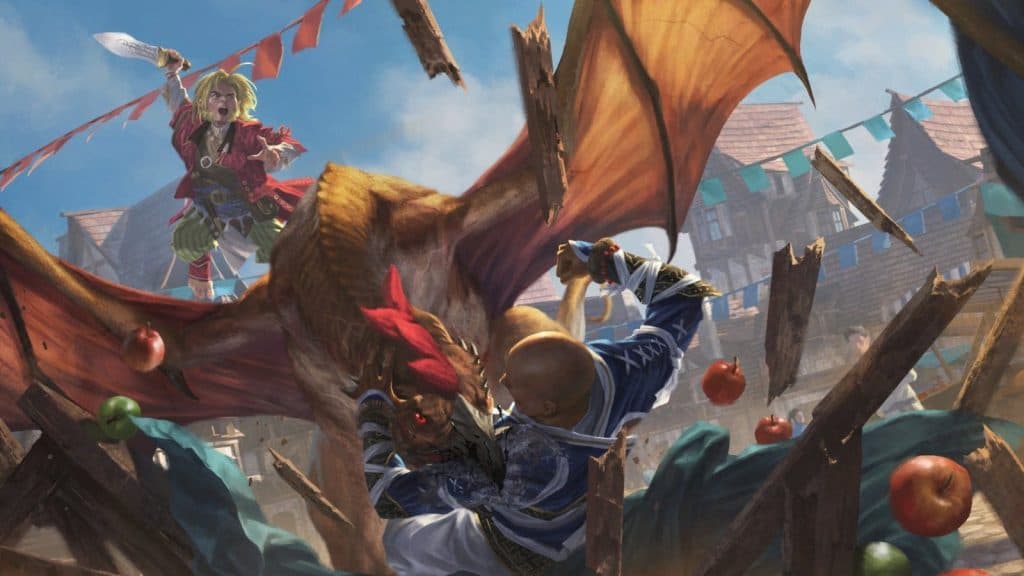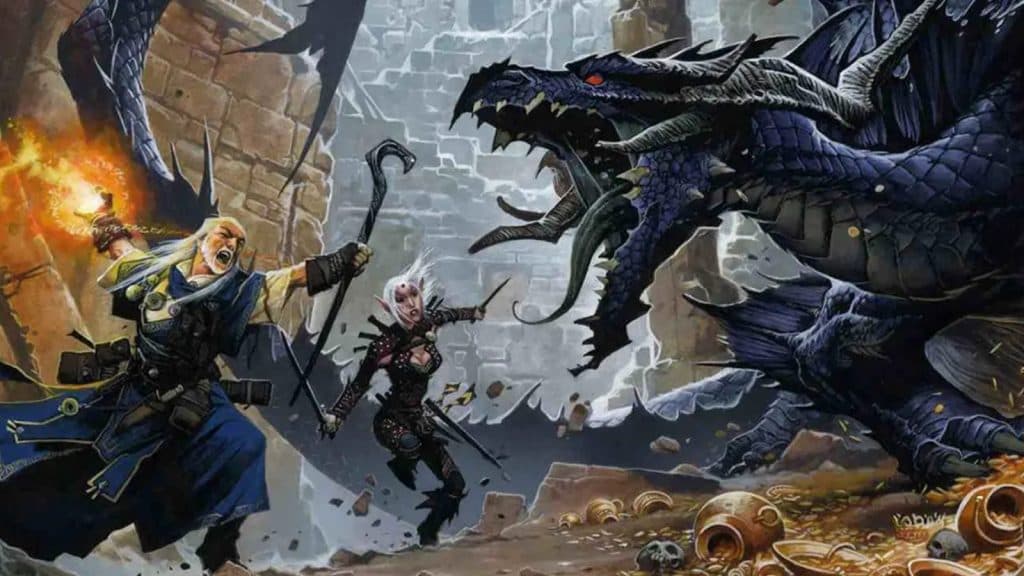How Pathfinder 2E movement & reach works
 Paizo
PaizoBattlefield positions are vitally important in Pathfinder 2E, after all, you need to understand how the movement & reach rules work to keep your character safe as they dash through combat.
Pathfinder 2E has a tactical combat system with many interlocking gameplay elements that interact in various ways. Compared to D&D, it’s a more complex system that requires more from the player and the DM.
The position of the player characters and the monsters is especially important, as many of your Actions and Reactions are tied to where everyone is standing at that moment in time or where they’re currently moving to.
As Pathfinder 2E’s rules are more complicated than what some players are used to, we’ve created a helpful guide to explain the movement & Reach rules, as understanding the safest places on the battlefield will help keep you and your party alive.
Determining Speed in Pathfinder 2E
 Paizo
PaizoThe first thing that needs to be established is how far your character can move, which is determined as part of your Speed stat. Your Speed stat will be broken into feet; if you’re using a battle map, each square on the map equals 5 feet. So, if your Speed stat is 30 feet, you can move six squares.
To determine your Speed, you start with your choice of Ancestry, and these can have a wide variety of values, such as a dwarf having 20 feet while elves have 30 feet. Your class can also provide a Speed bonus, such as the Barbarian’s level 4 Fast Movement Feat.
It also bears mentioning that your armor can reduce your Speed score if your Strength stat isn’t high enough, meaning you lose movement in exchange for a higher Armor Class score.
There are also many temporary effects that can increase/decrease your Speed, such as the Fleet Step Arcane spell, so there are measures available that can make you faster or slow down your enemies.
How movement, Strides, and Steps work in Pathfinder 2E
In Pathfinder 2E, a character can take three Actions on their turn, as well as a Reaction, which can occur on an enemy’s turn. One Action you can take is Stride, which allows you to move up to your Speed value as part of one Action. This is the most common way you’ll be moving in Pathfinder 2E.
It bears mentioning that, unlike D&D, you cannot perform other Actions mid-Stride, unless you have a class/ability that says otherwise. If you want to move, attack, and move again, that will usually take all three Actions.
You can use all three of your Actions to perform Strides, allowing you to move three times your Speed value in a single turn. Unlike performing multiple attacks in Pathfinder 2E, there’s no penalty for performing multiple Strides, and you’ll have access to your full Speed with each movement.
The world around you can impede your movement. Moving into or through difficult terrain costs an additional 5 feet of movement per square. Moving into or through greater difficult terrain costs 10 additional feet of movement per square.
Like in D&D 5E rules, you can freely move through an ally or friendly creature’s space. It’s also possible to move through an enemy’s space using the Tumble Through Action, which is tied to your Acrobatics Skill.
Moving diagonally in Pathfinder 2E has special rules. The first time you do it costs 5 feet, then the second time you do it costs 10 feet, then 5 feet again, then 10 feet again, and so on. This value carries across your whole turn and cannot be cheated using multiple Actions, though your counter resets when you start a new turn.
The other important movement Action in Pathfinder 2E is Step. This will allow you to move a single 5-foot step without provoking Reactions that involve entering/leaving threatened areas. This is a vitally important Action, especially when enemies surround you, as it lets you escape from brutal attacks of opportunity, so long as you’re willing to spend Actions.
It’s possible for characters to gain new types of Speed that let them move in different ways. Burrow Speed lets you move underground, Climb Speed lets you move up vertical surfaces, Swim Speed lets you move through water with ease, and Fly Speed lets you move vertically. These special Speeds are usually granted by Ancestry, class abilities, or spells.
 Paizo
PaizoHow Reach works in Pathfinder 2E
A character’s Reach is also important in Pathfinder 2E, as it determines whether you can hit enemies and whether they’ll trigger Reactions from you. The Strike Action is your basic melee attack, and it can usually only be performed against creatures within your Reach.
Usually, a creature’s Reach is based on size, depending on whether it’s Tall or Long. In most cases, the player characters are classed as Tall. This is the Reach for Tall creatures:
- Small – 5 feet
- Medium – 5 feet
- Large – 10 feet
- Huge – 15 feet
- Gargantuan – 20 feet
This is the Reach value for Long creatures:
- Small – 5 feet
- Medium – 5 feet
- Large – 10 feet
- Huge – 10 feet
- Gargantuan – 15 feet
The Reach value determines your natural reach, so a Large creature can hit enemies within two squares with just its fists. The downside is that bigger creatures take up a larger area on the battlefield and, as such, are easier to hit.
There are ways to increase your Reach, such as using a longer weapon, like a Glaive, or certain class abilities or spells. Increasing your Reach can be extremely useful for a melee-focused build, especially one with many Reactions.
Reach is often used in conjunction with Reactions, such as the Fighter’s Attack of Opportunity ability, which lets them strike an enemy who performs certain actions within their Reach. The second you enter a creature’s Reach, they have the potential to use melee Reactions against you.
Using a mount in Pathfinder 2E
One way to increase your Speed is to use an animal. If you’re a heavily-armored dwarf who can barely sprint, you can buy a riding horse, as it has a base Speed of 40ft, allowing you to gallop across the battlefield.
In most situations, you can make a Nature check to perform the Command an Animal action, which will automatically succeed if you have the Ride Feat and are using a mount. If successful, you can order the animal to Stride or use a movement-based ability, which it will perform on its turn.
There are some caveats to using a mount, the most important being that the DM controls the creature, and a critical failure means it can disobey your order or inadvertently put you in more danger. It’s also possible for enemies to manipulate the mount with their abilities, potentially making them a liability.